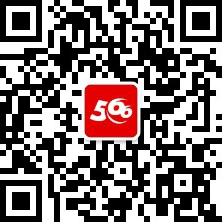| 第 1 页:模拟试题 |
| 第 2 页:参考答案 |
一、单项选择题(本大题共30小题,每小题2分,共60分)
在每小题列出的四个备选项中选择一个最佳答案,错选、多选或未选均无分。
1. The visitors here are greatly impressed by the fact that _____ people from all walks of life are working hard for _____ new Ma’anshan.
A.\; a B. \;the C. the; a D. the; the
2. _____, a small advertisement held my attention, which read “Easy job. Good wages. No experience necessary.”
A. Looking through the newspaper B. While I was looking through the newspaper
C. To look through the newspaper D. I was looking through the newspaper
3. Hard work, however, does not necessarily _____ much achievement or honor which is expected by someone.
A. stand up for B. come up with C. go after D. result in
4. _____ the aid from the government, the earthquake-stricken area _____ greater loss.
A. Apart from; should have suffered B. But for; would have suffered
C. Thanks to; could suffer D. Except for; would have suffered
5. I doubt if it is _____ for you to read that book again.
A. worth B. worthy C. worthwhile D. valuable
6. To distinguish sounds, students are encouraged to practice ____.
A. minimal pairs B. nasal explosion
C. consonant clusters D. incomplete explosion
7. Language is said to be arbitrary because there is no logical connection between _____ and meanings.
A. sense B. sounds C. objects D. ideas
8. If two sounds are in complementary distribution, they are _____ of the same phoneme.
A. allophones B. symbols C. phones D. signs
9. Which of the following sentences is a two-place predicate?
A. It is snowing. B. The baby is sleeping.
C. John gave Mary a book. D. Jack loves Mary.
10. The structural view limits knowing a language to knowing its structural rules and vocabulary. The communicative or notional-functional view adds the need to know how to _____ the rules and vocabulary to do whatever it is one wants to do.
A. use B. analyze C. learn D. remember
11. If a teacher asks “What does corrective feedback mean”, this type of question is called “_____”.
A. referential question B. tag question
C. rhetorical question D. display question
12. A variety of games, role-plays, situations, etc. are _____ communicative activities prepared to support the Communicative Language Teaching.
A. text-based B. task-based C. game-based D. situation-based
13. What is the purpose of using information gap activity?
A. To prepare students for oral presentation.
B. To provide students with an enjoyable activity based on effective communicative approaches.
C. To ask students to listen and write.
D. To make enough input.
14. In _____, substitutional and transformational drills are frequently used and aimed at form accuracy.
A. cognitive processing B. communicative practice
C. meaning practice D. mechanical practice
15. In a conversation about how to spend a holiday, a student says, “I have plan to go traveling with my family.” Which of the teacher’s feedback will keep up communication as well as help the student correct his syntax error?
A. You should say you have planed to go traveling with your family.
B. Why not say you planned to go traveling with your family?
C. You say you haveplan to go traveling?
D. You should pay attention to the tense of the sentence.
16. Which of the following does a teacher want his / her students to develop if he / she guides them to take notes key words, abbreviations and symbols?
A. Cultural awareness. B. Language awareness.
C. Learning strategies. D. Language knowledge.
17. According to The National English Curriculum Standards, the language knowledge students are required to learn consists of phonetics, vocabulary, grammar, _____.
A. function and theme B. culture and society
C. literature and linguistics D. discourse and genre
18. Which of the following should a teacher avoid when using an ELT course book?
A. Selecting appropriate supporting materials and resources.
B. Interpreting curriculum goals and its expectations for the course.
C. Planning lessons in relation to specific goals, topics, texts, and tasks.
D. Implementing everything in the book without considering students’ needs and levels.
19. Total Physical Response as a TEFL method is more often used for teaching ____.
A. children B. adults C. ESP course D. GE course
20.Which of the following is an example of teachers’ indirect corrective feedback?
A. say “went” instead of “go”
B. we never use “at” that way
C. choice A is not the right answer
D. who can help him with this sentence?
请阅读Passage 1,完成21~25小题。
Passage 1
There’s always a lot to do to get the kids ready to go back to school, let alone trying to get them excited about the idea. To help your kids get ready, save a few dollars in the process and have some fun with them in the dying days of summer, try a few of these fun filled activities.
*********************************************************************************
UP-CYCLING
Every student needs school supplies. But a lot of what they need is already littering around your house. If you don’t have reusable school supplies at home, you might have the materials to make them.
Try up-cycling with your kids and change old or useless products into new ones.
Here are a few ideas to get you started:
●Sew blue jeans into pencil cases.
●Turn shoeboxes into arts storage boxes.
●Use an old belt as a books belt.
●Wrap book covers in old posters.
Up-cycling is a great way to develop artistic talent and creative thinking in your children.
*********************************************************************************
PLAN TO PACK AHEAD
Most teachers and schools reward green behavior among students. To help your kids stay green, be sure to have these items on hand so you can pack them litter-less lunches.
Here’s what you need:
●Reusable lunch containers.
●A firm lunchbox and thermos(水瓶).
●Reusable napkins(餐巾).
*********************************************************************************
MAP IT OUT
Across the country, kids are thinking about how they’ll get to school. Do I walk? Do I bike? Either way, avoid driving them if at all possible.
Kids need to stay active and want to connect with other local kids on the way to school. Help your children map out their route or get them involved with a local walking school bus. A walking school bus is groups of children walking to school with one or more adults.
*********************************************************************************
We hope these activities will help you and your kids get ready for the new school year, and that you’ll have some fun in the process. Last but not least, some activities may require encouragements … may we suggest some organic chocolate ice cream.
21. What do the suggested activities have in common?
A. Having fun and saving green.
B. Saving money and obeying school rules.
C. Offering food and training skills.
D. Bringing teachers together and saving money.
22. The activities of UP-CYCLING bring benefits of ____.
a. making old products into creative school supplies
b. making friends with local kids on the way to school
c. bringing fun of cooperation between parents and kids
d. packing litter-less lunches to school
e. developing kids’ artistic talent and creative thinking
A. a, c, d B. b, c, d C. b, d, e D. a, c, e
23. Which of the following is TRUE about the MAP IT OUT activity?
A. Parents are forbidden to be involved in the activity.
B. Children can learn to read a map and take a correct school bus.
C. Parents are expected to drive their kids to school if possible.
D. Children walk to school together accompanied by one or more adults.
24. What’s the meaning of the underlined words in paragraph three?
A. The behavior to make the children to be green.
B. The behavior to make the children to learn to protect the envirment.
C. The behavior to make the children to learn saving.
D. All of the above are right.
25. The passage is most probably intended for ____.
A. teachers B. parents C. children D. headmasters
请阅读Passage 2,完成26~30小题。
Passage 2
Mom was right! If you say thank you, for even the smallest gift or slightest show of kindness, you’ll feel happy.
Gratitude, says Robert A. Emmons, a professor of psychology at the University of California, is an important element of happiness. In his recent book, Thanks! Emmons uses the first major study on gratitude to prove mom’s point.
As one of the leading scholars of the positive psychology movement, he admits gratitude may be difficult to express. He advises you to begin by admitting that life is good and full of events and elements that make daily existence a wonder. Second, recognize that the source of life’s goodness is more than just you. That source may be your mom, a friend, partner, child, colleague at work or play.
Gratitude is always other-directed, notes Emmons. You can be pleased or angry with yourself and feel guilty about doing something wrong, but you can never be grateful to or for yourself.
Expressing gratitude shouldn’t be a reaction; it should be a state of mind. To feel grateful when life is a breeze and you have more than you need is easy. To feel grateful in time of crisis—anger, hatred and bitterness—is easier. Also, too many people are aware of life’s blessings only after these are lost.
It’s crisis and chaos—danger, disease, disability and death—that bring many individuals to realize just how dependent they are on others. Yet it’s the way each of us begins life and ends it. It’s too bad that so many people waste those decades in between laboring under the illusion(幻觉) they are self-sufficient, says Emmons.
The abundance of voices expressing gratitude from his studies of individuals with chronic health problems is many. But Emmons goes beyond his “groundbreaking” science to make his case for gratitude by including the inspirational writings of philosophers, novelists and saints, as well as the beliefs of various religious and their respective scripture(经文). Take together, these observations are summed up quite nicely by famous humanist Albert Schweitzer, who said the secret of life is “giving thanks for everything”.
To enable and embrace gratitude, Emmons encourages the readers of Thanks!to keep a gratitude diary. He even provides easy-to-follow directions on how to practise and develop gratitude.
I’m not a reader or advocate of self-help books, but I am thankful for the reference I found in a newspaper article to the research Emmons was conducting on gratitude involving organ donors and recipients. The chance discovery led me to this book.
Mom implied that kindness seems to find its way back to the giver because life really is all about giving, receiving and repaying. So I’ll pay attention to her professional advice and say: Thank you, professor Emmons.
26. What is the text mainly discussed?
A. There are many ways of being thankful.
B. Gratitude is important to happiness.
C. Mom is great for her being thankful.
D. Being thankful will keep you fit.
27. The author mentions Robert A. Emmons’ book Thanks! in order to prove that _____.
A. Professor Emmons supports mom’s study on psychology.
B. mom is as great a psychologist as Professor Emmons.
C. Professor Emmons is a famous psychologist.
D. mom is right about her viewpoint on gratitude.
28. It will be easier for you to feel grateful when______.
A. you live a comfortable life
B. you receive gifts on your birthday
C. you get help during your hard times
D. you are congratulated on your success
29. What is the opinion of Professor Emmons?
A. It is enough to thank others orally
B. Whether you are thankful is always up to you
C. Remember to be thankful anytime and anywhere
D. It is easier to be thankful for yourself than for others.
30. In the writer’s opinion, Emmon’s book Thanks! On gratitude is _____.
A. one-side B. reasonable C. puzzling D. helpful
二、简答题(本题共1小题,20分)
听说课的教学步骤一般分为哪三部分?(6分)请简述它们各自的目的是什么?(14分)
三、教学情境分析题(本大题1小题,30分)
根据题目要求,完成下列任务,用中文作答。
材料:

上面是某英语教师对学生作业的批改案例,请用中文从以下方面进行评析。
1.作业批改存在的问题(10分)
2.该批改方式可能导致的负面结果(10分)
3.针对存在的问题提出相应的改进建议(10分)
四、教学设计题(本大题1小题,40分)
根据提供的信息和语言素材设计教学方案,用英文作答。
设计任务:请阅读下面学生信息和语言素材,设计一节20分钟的英语听说课的教案。教案没有固定格式,但须包含下列要点:
● Teaching objectives
● Key and difficult points
● Major steps and time allocation
● Activities and justifications
教学时间:20分钟
教学材料:

相关推荐:
2020上半年教师资格《幼儿综合素质》模拟题汇总※ 报名公告汇总
2020教师资格准考证打印时间及入口 ※ 教师资格考试时间 ※ 考试科目
2020年教师资格证考试大纲 ※ 教师资格复习指导※教师资格考试教材
·2020教师资格证考试小学教育知识考点习题(21) (2020-7-1 9:57:11)
·2020教师资格证考试小学教育知识考点习题(20) (2020-7-1 9:56:11)
·2020教师资格证考试小学教育知识考点习题(19) (2020-7-1 9:55:11)
·2020教师资格证考试小学教育知识考点习题(18) (2020-7-1 9:54:11)
·2020教师资格证考试小学教育知识考点习题(17) (2020-7-1 9:52:11)
·免费真题 ·模考试题


实用文档 | 入党资料 | 入党申请书 | 入党志愿书 | 个人自传 | 转正申请书 | 思想汇报 | 个人简历 | 简历模板 | 简历封面 | 工作计划 | 工作总结 | 自我评测
个性评测 | 社交评测 | 事业评测 | 运势评测 | 报告 | 实习报告 | 工作总结 | 社会实践 | 心得体会 | 述职报告 | 调查报告 | 辞职报告
法律文书 | 合同范本 | 演讲范文 | 更多>>
英语学习 | 听力口语 | 阅读写作 | 翻译文化 | 趣味英语 | 学习方法 | 英文经典歌曲 | 每日课堂 | 空中英语 | 少儿英语 | 影视英语 | 英文歌曲 | 更多>>
作文大全 | 作文 | 小学 | 初中 | 高中 | 话题作文 | 考研 | 四六级 趣味作文 | 体裁作文 | 记叙文 | 议论文 说明文 | 应用文 | 读后感 | 作文素材 | 名言警句
优美段落 | 哲理故事 | 诗词赏析 | 成语知识 | 技巧 | 写作指导 | 作文点评 | 佳文赏析 | 写作基础 | 话题演练 | 作文教学 | 更多>>



